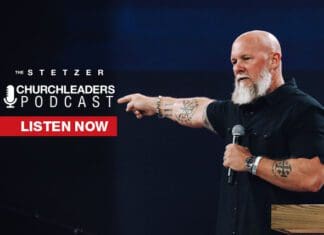Will you lead your people back to church? Who is coming back to church, and when?
Then again, is it really about “coming back?”
In principle no.
Most of your congregation never left. Most are with you online. And the church is not about a building; it’s about the impact of Jesus in the community.
In practice, yes.
We all know what we’re talking about.
The return of the church to physical buildings post COVID, and we are very much in uncharted waters.
People will come back; that we can know with confidence.
What we don’t know is who, how many, and when.
So, let’s be candid. There is more we don’t know than we do.
But isn’t that what we as leaders are called to do — lead into the unknown?
If you are truly leading, that means you are guiding those you lead somewhere that you and they together have not been before. That “place” is a better life through Christ.
The foundation of that premise never changes, but culture has changed, so we must adapt as needed.
The purpose is that people may continue to say yes to the person and message of Christ and mature in their faith.
So, why do you need to lead people back to church?
The world has changed. Social norms have changed. People disagree on what is safe and not safe. The economy has changed. We have to lead.
Perhaps you prefer the word invite or encourage… that’s obviously fine. But it’s good to think within the bigger picture of leadership.
3 ways to lead different groups of people back to church:
Important note: None of these three groups indicate a level of spiritual maturity or is better than another.
They are merely an indication of personal wiring, health concerns, and social preferences. For example, you will find that your volunteers are among all three groups, and don’t be surprised that even your staff may be in all three groups.
1) I’m running back.
This is the group that can’t wait. They have their running shoes on and are ready to sprint.
Many would have never left had you not closed the doors. They don’t need or want masks, and some would hug you if you let them.
Some in this group are excited about the date the doors will reopen, and some are frustrated that you have not opened already.
Let’s estimate that this group comprises about 25% of your congregation.
You don’t need to encourage them to come back, right? But they need your leadership to know how to come back.
The keyword is PACE.
Help those who want to run back to church as soon as the doors open, pace their zeal, and engage others who feel and think differently with honor and respect.
They need to embrace that while they are comfortable about being close to others, many in your church are not yet ready.
And of course, this wonderfully eager group needs to be sensitive to the reality that while they are running, others are walking. It’s not about spiritual maturity or bravery; it’s how each of us sees life during and post COVID.
We must be careful to not even unknowingly pressure anyone to come back to a physical church building before they are ready.
2) I’m walking back.
If the “I’m running back” group carries great zeal, the “I’m walking back” group carries sincere caution.
The “I’m walking back” group wants to carefully process what they see and experience before they return to a church building.
This is likely the largest group, let’s estimate that this group is about 60%.
The overall concept is that this will be the largest of the three groups, regardless of the percentage you estimate.
The keyword is PEACE.
Those who choose to “walk back” will be listening carefully to what you say, watching how you open, and connecting that to their own personal perceptions of the new normal. (Post COVID)
Those who come back to church more cautiously will return when they have an internal peace, and as a leader, you can greatly help in that process.
First, how you prepare and communicate will help elevate their level of peace. If they sense a thoughtful, well prepared, and clearly communicated process that will enhance their level of trust and comfort.
Second, take the “I’m walking back” group seriously. Treat their concerns with respect but keep the tone light.
That means while you treat people with honor, you don’t have to dampen your own enthusiasm.
Lead with confidence while you honor other’s points of view.
3) I might not come back.
Don’t panic about this group. Their delay, even indefinite delay, is not necessarily a bad thing.
You may have done such an excellent job with online ministry that they discovered they really like it. That’s good!
If you communicate the freedom to attend online as a regular place of worship rather than subtly pressuring someone to come back, they are much more likely to return in time.
(I know that church leaders will not intentionally pressure anyone, but in our enthusiasm, it might seem that way.)
Keep in mind that some may have some degree of compromised health conditions or a combination of age and health issues that suggest they hold back for a season.
If you go with the estimates I’m offering as an example; this group might represent about 15%.
The keyword is PAUSE.
Many are fully with you in heart and spirit, but they have simply pushed the pause button for their church attendance in a physical building.
Here are a couple of thoughts on how you can encourage this group.
Intentionally design ways for those who have “pushed pause” on coming back to church to stay very connected beyond watching the service online.
One great example is small groups.
Those in the “pause” group may be very comfortable with a six or even eight-person small group. If not, you can build and offer online small groups. There are many possibilities.
Another way is to reach out, making personal connections focused on engagement.
Lead with genuine love, concern, and sincere shepherding.
Communicate how your ministries can serve those who have pushed pause on physical attendance to continue to move forward in their faith by connecting and serving with others.
Explain your options of how they can engage and be involved that do not require large groups of people.
Our founding and senior pastor Kevin Myers delivered an outstanding message on this topic using a creative metaphor of a Traffic Signal Light!
Check out how you can use “Green, Yellow and Red” to communicate to your congregation about returning to church. You can watch it here.
This article about leading people back to church originally appeared here.














